
Fw 190A-6

The
Fw
190 is another aircraft that information on it abounds and I'm not
going into a lot of detail on it here. The A-6 version was very
similar
to the A-5 which in turn was developed from the A-4. The A-5
featured a redesigned engine mounting which moved the engine forward
5.9 inches. The A-6 saw the replacement of the elderly Mg FF cannon
fitted in the outboard wings, with the MG 151 cannon. The A-6/R2 was a
fighter-bomber fitted with under wing racks for two 550 lb. bombs in
place of the outboard cannons.
The Kit
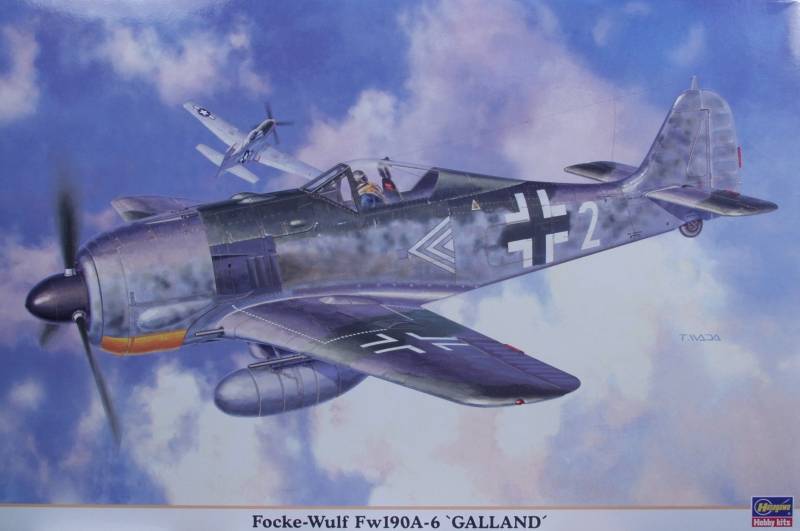
The Hasegawa
Fw 190A-6 comes in a box whose size reflects the scale. The box is the
top open style with Hasegawa's usually lovely artwork on top. The box
is nice and sturdy with the bottom half made from corrugated
cardboard.
Inside the box we find that there are three bags of parts. One large
bag has three sprues of gray plastic, one medium sized bag has three
sprues of gray plastic and one small bag has the clear parts.
The surface finish is smooth and glossy and the detail is mostly
recessed,
panel lines and access panels with a few raised fasteners and
other details as applicable. The
only
surface defects I found on my kit
were a series of sink marks on the outer surface of the flaps. Parting
lines are light and should be easy to
clean up. Except for the flaps, all of the other control surfaces are
molded in the neutral position. If you plan to leave the flaps down
you
will have six ejector pin marks to clean up. Fabric
control
surfaces
are smooth and provided with rib tapes with stitching detail.
These are probably a little large for the scale but I think will look
OK
under a coat of paint. The piano hinge detail on panels that are
hinged
look nice. There are also some ejector pin marks on the inside of the
main gear doors but the will be mostly hidden but the struts and
wheels.
The cockpit
looks a little sparsely populated but the 190 did
have a much less cluttered cockpit than many of its contemporaries. In
this scale one can go nuts adding extra detail if you are so inclined
and talented. A
pilot figure that is common with most of the 1/32 Hasegawa kits is
included. The instrument panel and the side consoles have nice raised
detail and there are decals supplied for them. The main gear struts
are
cleanly molded but do have some small ejector pin marks but again they
are on the side next to the gear doors so they shouldn't be an issue.
The gear struts positively locate in the wheel wells so one does not
need to worry about getting the mounting angles correct.
The tail
wheel and strut
are molded in two halves and are not all that convincing looking, I
would have rather seen a separate wheel in this scale.
The gear
wells are molded separately with nice internal detail.
The engine is a bit lack luster one piece casting. It does have separate push rods and an accessory group on the front but it will all but disappear behind the cooling fan and tight cowling. The exhaust stacks are not hollowed out on the ends. A wing spar is incorporated to keep the dihedral proper and provide a solid mount for the wing. The kit includes a drop tank. There are a number of holes that need to be opened up before the wings and fuselage are glued together so check the instructions to see which ones are needed. The wheels are nicely molded in two halves and are not weighted. As is the norm with Hasegawa kits provisions are made for multiple versions and as a result there are some parts that are not used. There is also some detail that must be removed and filled on the starboard side of the fuselage for this version. Sprue photos follow...
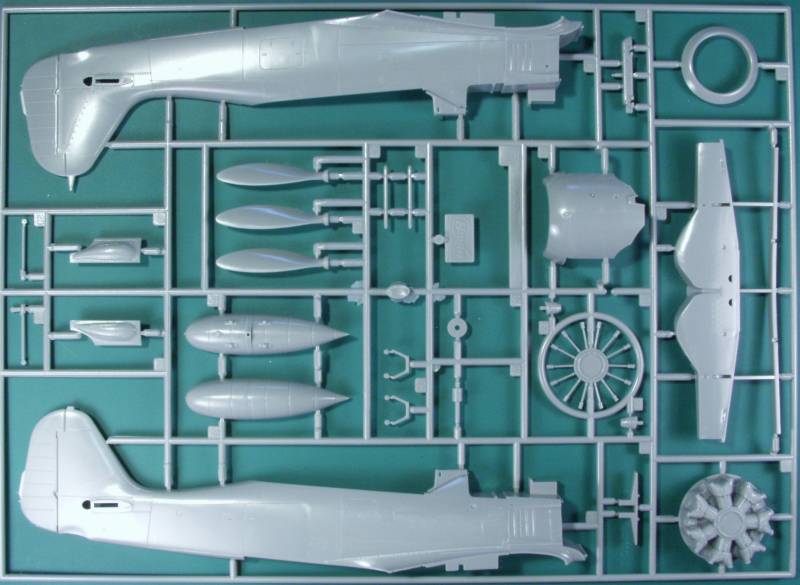
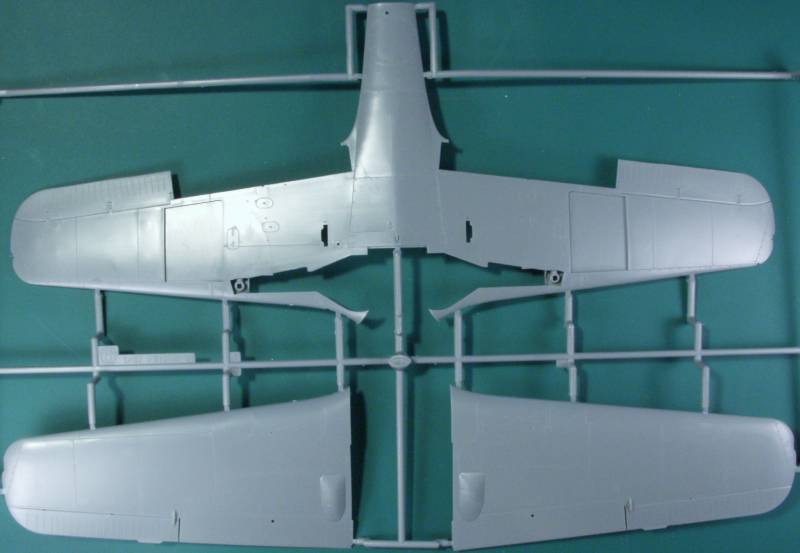
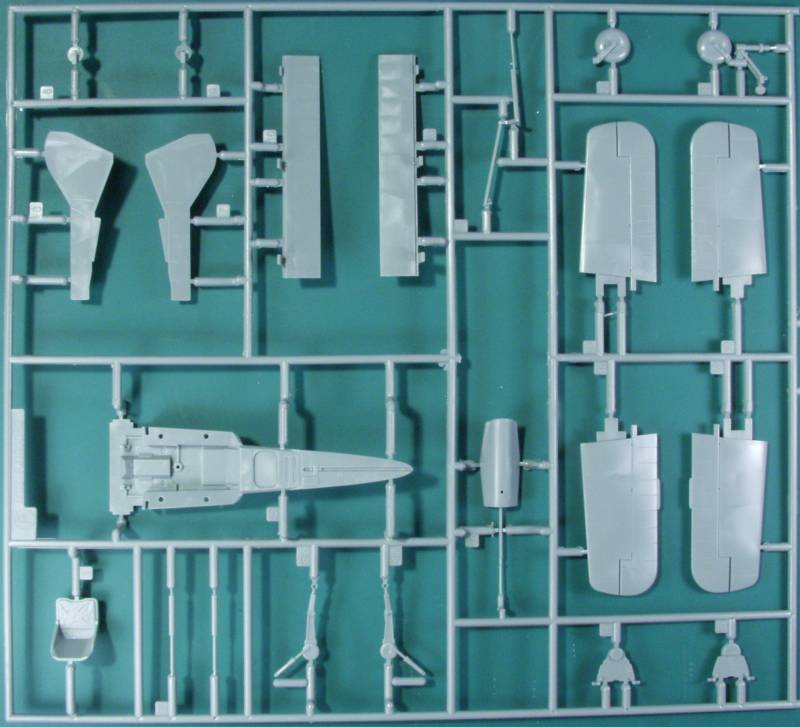
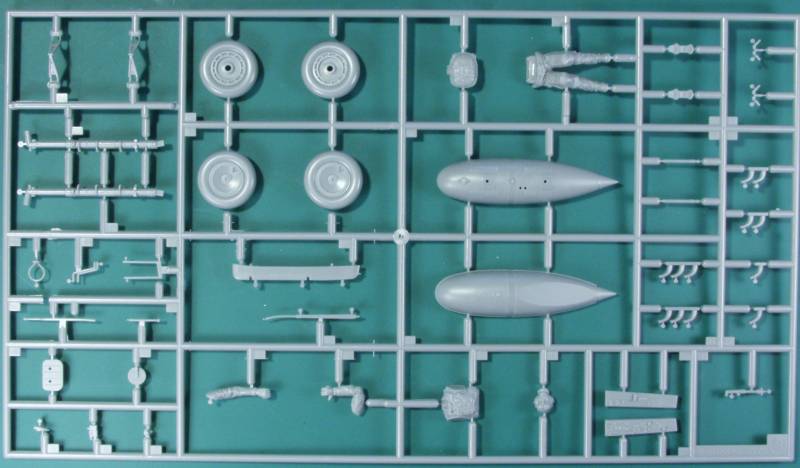
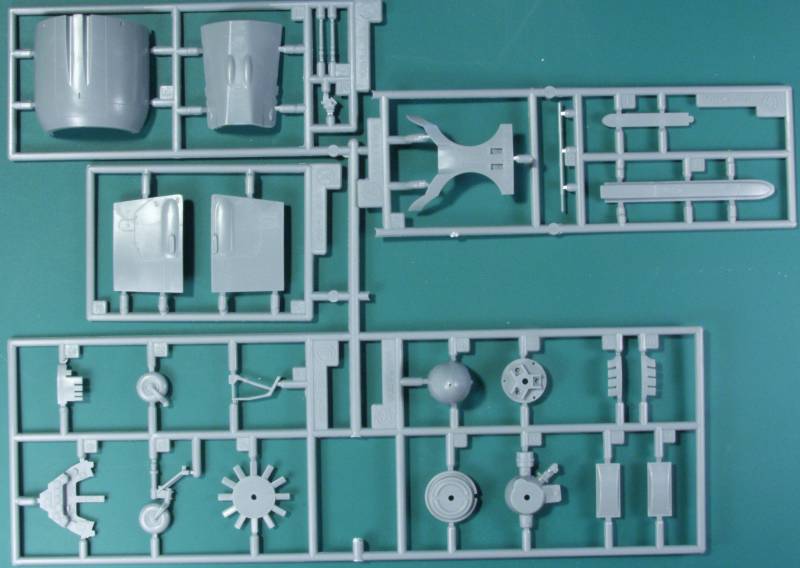
The clear parts are thin and fairly clear although I have seen better. A dip in Future should improve things a bit. The frame lines are well defined. Glasses for the gun sight are also included. See below.
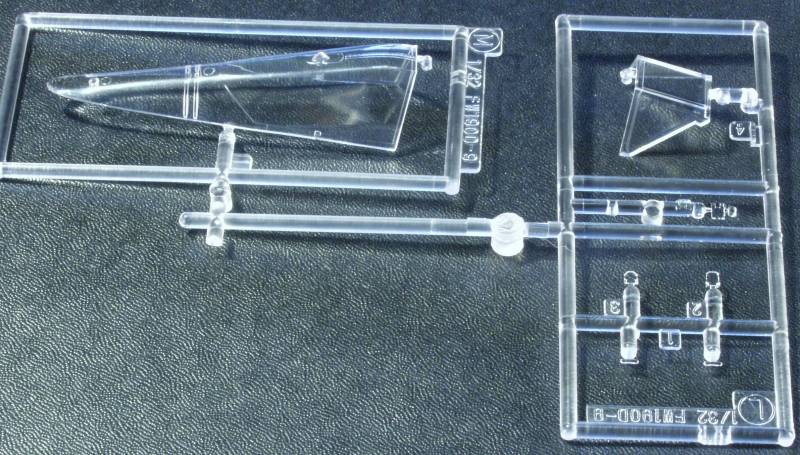
The decals have a semigloss finish and a bit more excess film that I like to see. They seem to be mostly in register, the exceptions being the fuel markings and the first aid cross. Markings are supplied for to aircraft. One being that of Adolf Galland's in March of 1944, the other in the markings of Anton Hackl, JG11. A good amount of stencil data is supplied.
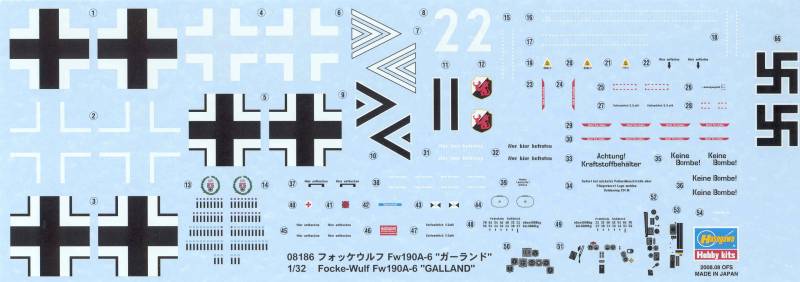
The instructions are printed on a long sheet folded to create panels, in this case 8 of them. The front panel has history and specifications in Japanese and English, the second, third and fourth panels have the assembly steps divided into 14 steps. The fifth panel has a parts map and color chart calling out colors by generic names and some by RLM numbers and Gunze paint numbers. The sixth and seventh panels have the painting and marking diagrams and the eighth panel has basic assembly information, safety warnings and decal application instructions.
After Market Goodies
I only went with seat belts and harness (Eduard # 32600) and some placards (Eduard # 32593), lots more is available if you are so inclined. See below.
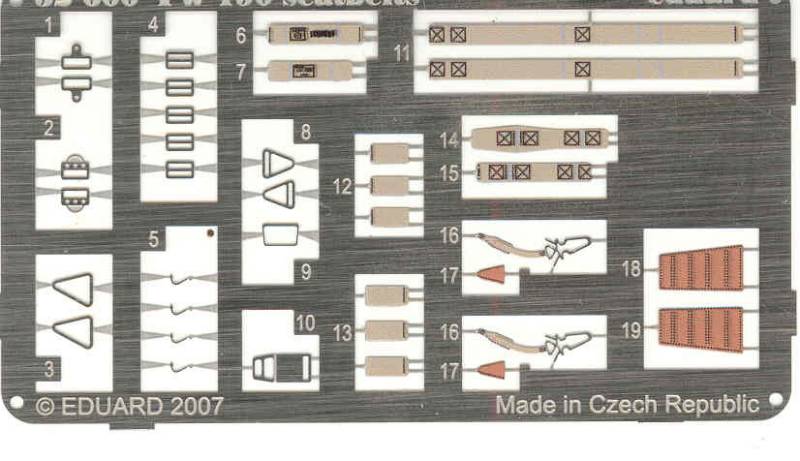
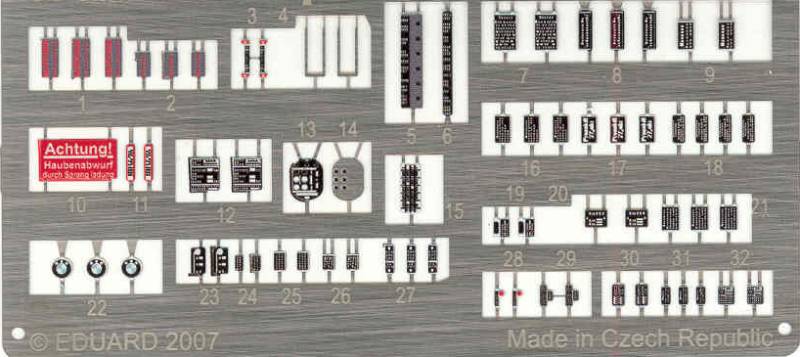
Conclusions
By all accounts the kit is a fairly easy build with no serious assembly issues and therefore I give it a highly recommended rating for all but the most rank beginners in the hobby.
Links to kit build or reviews
A build / review can be found here. It has different markings but is essentially the same kit.
References
I have more 190 references than I care to list and the Internet is loaded with information, let Google be your friend.
Back to the 1/32 German Aircraft Page